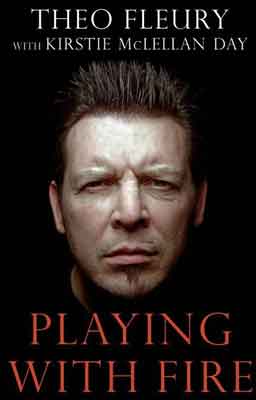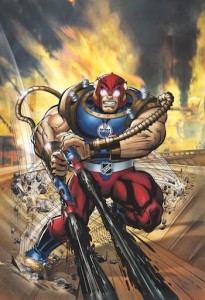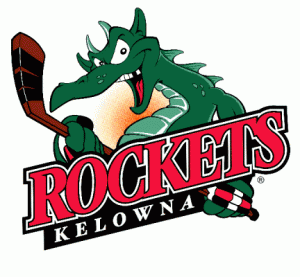Speed demon: why Daniel Catenacci is the sleeper of the NHL draft
The National Hockey League’s Central Scouting Bureau released its final rankings for draft eligible amateur players on Monday. Not surprisingly, the top three North American skaters were Ryan Nugent-Hopkins, Gabriel Landeskog and Jonathan Huberdeau.
But those high picks are only a small part of the draft. What if your team has a low pick, or maybe no picks in the first round, who should you be hoping to get for that instant impact? Who is the sleeper of the 2011 draft?
Look no further than Daniel Catenacci of the Sault Ste. Marie Greyhounds.
The five-foot-10 skater from Newmarket, Ont., was ranked 37th in the Central Scouting’s final report on domestic skaters, up from 43rd in January's midterm rankings.
When you mix in international skaters and goaltenders that means Catenacci could go as late as the third round of the NHL draft on June 24.
It’s an understandable fate when you look at the 18-year-old’s numbers from the Ontario Hockey League. Last season he had 26 goals and 45 assists with a minus-5 +/- rating and 117 penalty minutes. The year before that, Catenacci was a non-factor with 10 goals and 20 assists.
But Catenacci has a quality that most of his draft classmen lack: speed.
The above video is from the Canadian Hockey League Top Prospects game at Toronto’s Air Canada Centre on Jan. 19, when Catenacci put the afterburners on and broke open the scoring for Team Orr while shorthanded.
In that video it’s obvious that he’s by far the fastest player on the ice. In fact, he usually is, but that clip is exceptional. The guys in his dust are the best and brightest the CHL has to offer and yet they can’t catch him.
Earlier that week I attended the Next Testing session at the Mastercard Centre for Hockey Excellence where the Top Prospects were put through their paces. Dead sprints, agility tests, you name it, they did it.
Again, Catenacci was, by far, the best skater, outmanoeuvring and outpacing the other 40 or so players being tested. (You can see some of his performance here.)
At the Top Prospects skills competition, Catenacci was name the fastest skater, turning in a performance way ahead of the pack.
Why does all this matter? Because the thing that strikes most rookies when entering the NHL is the speed of the game. For their entire careers they’ve been one of the top players on their team, if not the best, and that usually includes being the best skater. But coming to the NHL they’ve finally found their level, and that doesn’t hold true anymore.
As a result, most rookies spend their first year as a professional trying to improve their skating and catching up to their teammates and opponents. It hurts their vision of the ice and impacts their ability to make plays.
Catenacci, presumably, won’t have that kind of trouble, since he should be able to keep pace.
His speed will also be an asset as he finds his role in the NHL. After all, what assignments are rookies usually given? Penalty killing, checking lines, defensive work and all with limited ice time. In all three cases, a fast skater will, pardon the pun, excel.
Although he’s not the prolific scorer that a Nugent-Hopkins, Landeskog or Huberdeau will be, Daniel Catenacci’s speed is an undeniable advantage that will make him NHL-ready before most of his peers and, hopefully, will increase his value come draft day. Certainly, any team will be lucky to have him on their depth charts.
What is the best team in Toronto?
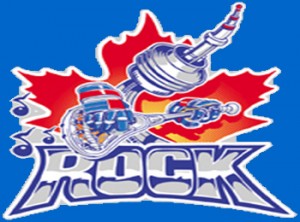 Toronto sports fans are lucky – they live in one of the few cities in North America to have a professional sports team in all four major leagues.
Toronto sports fans are lucky – they live in one of the few cities in North America to have a professional sports team in all four major leagues.
Well, okay, there isn’t really a National Football League team here, but the Buffalo Bills play two games a season at the Rogers Centre and there are the Toronto Argonauts, historically the Canadian Football League’s most successful team. Football is definitely covered in Canada's largest city.
But I digress. Toronto has eight professional sports teams, on a par with, or better than, the 14 American cities that have teams in the NFL, National Basketball Association, Major League Baseball and the National Hockey League.
Unfortunately, this creates a weird competition amongst the teams as they vie for fans attention. I was reminded of this weeks ago when a friend of mine from senior school posted on Facebook “So glad the Leafs suck more than the Raps. At least the Raps have upside”.
Of course, this was before the Raptors embarked on a Cavaliers-esque 13-game losing streak, but the comment got me wondering: what is the best team in Toronto? Which team does the best job of representing a city spoiled for choice?
Here are all of the city’s professional sports franchises, in order of winning percentage over the past two years.
| Team | This season | Last season | Cumulative |
| Rock | .667 (4-2)* | .562 (9-7)† | .615 |
| Blue Jays | .525 (85-77) | .463 (75-87) | .494 |
| Marlies | .470 (24-20-7)* | .413 (33-35-12) | .442 |
| Nationals‡ | .250 (3-9) | .583 (7-9) †¥ | .417 |
| Maple Leafs | .426 (23-26-5)* | .366 (30-38-14) | .396 |
| Raptors | .269 (14-38)* | .488 (40-42) | .379 |
| Argonauts | .500 (9-9-0) † | .167 (3-15-0) | .336 |
| Toronto FC | .300 (9-13-8) | .333 (10-11-9) | .317 |
Notes: * - Season currently underway.
† - Made the playoffs.
¥ - Won championship.
‡ - It was announced in the offseason that the Toronto Nationals have moved to the bustling metropolis of Hamilton, Ont., for 2011.
What’s most apparent in this chart is that it’s good to be a fan of lacrosse in Toronto. Especially if you live in the western part of the Greater Toronto Area, since Major League Lacrosse’s Toronto Nationals – the most recent champions in the city – are moving to nearby Hamilton.
But if you want to see a Toronto-based team do well in the regular season and go deep in to the postseason, you’d better pick up the nuances of lacrosse. The Rock are the best team in the NLL this year after losing a close game in the league championship last season.
Further, six of Toronto’s last nine championships have come from lacrosse teams, with the Rock contributing five and the Nationals bringing home the Steinfeld Cup two summers ago. The other three are all thanks to the Toronto Argonauts winning the Grey Cup in 1996, 1997 and 2004.
It’s also worth noting that attendance is seemingly unaffected by a team’s success.
Most Torontonians would immediately twig to the fact that the Maple Leafs, the city’s fifth best team, remain the most popular franchise while the Blue Jays – ranked second – had serious attendance problems last summer.
But what I find most striking is that Toronto FC, the team with the most passionate fans, has the worst record of Hogtown’s professional sports franchises.
In any event, I think this is an interesting exercise that would test perceptions of Toronto’s sports teams. Tell me: were there any surprises on this chart for you?
The NHL’s Guardian Project is a misstep
The National Hockey League’s All-Star Weekend has come and gone, generally creating a positive buzz for professional hockey in North America.
The All-Star Fantasy Draft, where captains Eric Staal and Nicklas Lidstrom selected their superstar teams schoolyard style, was a huge success, averaging 600,000 viewers in the United States.
Unfortunately, the lingering product from the gala event in Raleigh N.C. is the Guardian Project, the NHL’s misguided attempt at drawing in today’s youth.
The Guardian Project is a marketing campaign where legendary comic book creator Stan Lee designs super heroes based off the names of all 30 NHL franchises.
Sounds good in theory, but in practice the idea plays out like a super villain’s hare-brained scheme. Stan Lee + comic books + hockey teams + ???? = world domination.
In other words, it’s not very well thought out.
The NHL Guardians are problematic from their very conception. First, Stan Lee simply doesn’t have as much cultural cache as he once did. After all, he hasn’t had a monthly title since Ravage 2009 in the early 1990s. You know, when the Guardian Project’s target demographic was still years away from being born.
Second, the characters themselves are lame. Witness Chris Sims of ComicsAlliance epic takedown: The Ten Most Insane Characters From Stan Lee's 'NHL Guardians'.
Many of the characters seem to be based on a brief skimming of each franchise’s Wikipedia page. Important details like the military heritage of the Chicago Blackhawks and Toronto Maple Leafs aren’t touched on at all.
Most importantly, the NHL’s marketing department is once again playing away from the game’s strengths.
Hockey is one of North America’s oldest sports, with the NHL’s Original Six predating any National Basketball Association franchise, only a handful of National Football League teams and most Major League Baseball clubs.
It’s a disgrace that the Montreal Canadiens, a franchise that is over 100 years old and a cornerstone of Quebecois society, is being represented by the likes of this:
But campaigns like Project Guardians relies on trendy thinking that makes the NHL seem newer than the Arena Football League or other shaky niche sports.
Seriously – the Tampa Bay Storm of the Arena Football League predate the Tampa Bay Lightning by five years. The Charlotte Rage were created and folded before the Carolina Hurricanes moved from Hartford, Conn. The list goes on and on.
Commissioner Gary Bettman and the rest of the powers that be at the NHL have to learn that if they really want to make inroads in the Sun Belt, they need to educate and inform their new fanbase about the rich history and tradition of the game, not disregard it.
Otherwise, the NHL comes off as just the latest in a long line of failed sporting enterprises.
That’s why innovations like the All-Star Fantasy Draft and the Winter Classic have been so successful: because they are reminiscent of the history and tradition of hockey.
It’s also why the NHL’s Guardians Project was a dreadful misfire: it glosses over one of the most appealing aspects of hockey.
My latest for HPT.com – Like his personality, Burns leaves large legacy
I'm particularly proud of my work last weekend for HockeyPrimeTime.com. I wrote a brief piece on Pat Burns' impact on the National Hockey League's Northeast Division and my hockey fandom. Check it out and tell me what you think.
Like his personality, Burns leaves large legacy
A former policeman, Burns looked the part behind the bench with his thick moustache, but didn’t act like any cop that would visit my elementary school or volunteer with my Cub Pack. He was always yelling, screaming or trying to get at the other team’s bench. My parents had to awkwardly explain what he’d just said to the referees that had gotten him in so much trouble. (Although I had no problem understanding the idea of sending him to the locker room as punishment.)
He was easily my favorite of the Leafs. As news of Burns’ death spread Friday night, it quickly became clear I wasn’t the only one.
Top 10 ideas the National Hockey League should institute
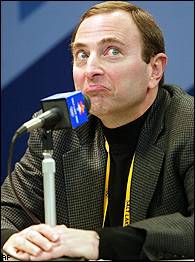 With the National Hockey League’s 30 general managers currently meeting in downtown Toronto to discuss changes to rules and policy, I figured I’d take the opportunity to chime in with my two cents. Times 10. My 20 cents, if you will.
With the National Hockey League’s 30 general managers currently meeting in downtown Toronto to discuss changes to rules and policy, I figured I’d take the opportunity to chime in with my two cents. Times 10. My 20 cents, if you will.
Lengthen overtime
Extending overtime is already on the table as the GM’s try to cut down on the number of shootouts, but I wanted to voice my support for this idea.
Right now, the extra period is just five minutes of 4-on-4 followed by the shootout. OT is the tensest period of play in any hockey game with each penalty, missed pass or deflected shot putting the game on the line.
There’s been a lot of talk of having five minutes of 4-on-4 and then five of 3-on-3. The former doesn’t really strike me as too interesting - I don’t see why they couldn’t just do 10 minutes of 4-on-4, or, what the hell, a full 20 minutes of 4-on-4 followed by the shootout.
It’ll still cut down on the number of shootouts and will create more tension and therefore more excitement. Fans tend to enjoy excitement.
Get rid of archaic blackout rules
As I’ve mentioned before, my fiancée Katy and I are a mixed couple – I’m a Leafs fan and she supports the Oilers.
It makes for the occasional tense moment, but what really aggravates things is that we can only watch the Leafs and rarely the Oilers thanks to the NHL’s ridiculous TV blackout rules. This regulation prevents anyone with a standard cable package from watching an out-of-market hockey game.
In other words, although Sportsnet West was carrying the Edmonton-Carolina game last night, we could only watch the Toronto-Tampa Bay match or the Washington Capitals-New York Rangers game. I understand the original reasoning behind this rule was to keep fans interested in their hometown markets.
However, this hurts the NHL more than it helps. If a fan in Minnesota wants to cheer for the Pittsburgh Penguins, then so be it. Associating yourself with frustrating rules that limit your fans ability to watch your product is never a good idea. Dropping this ridiculous regulation would also tie in with…
Embracing fantasy hockey
I think we can all agree that the National Football League is the best run professional sports league in North America and arguably the world. So why not tear a page out of their playbook and embrace fantasy sports?
In addition to showing the scores from games, the NFL runs tickers of the top five stat lines from each position during their Sunday broadcasts. That running update on the individual success of its players is aimed straight at fantasy football managers eager to see how their personal team is doing.
The NHL should do likewise: run a ticker with the statistics of the top five forwards, defenders and goalies each and every broadcast night.
Clamping down on vague “lower body injury” reports would be a good idea as well. Force the teams to reveal more details about their hurting players for the benefit of fantasy hockey managers. Anything to make fantasy hockey more accessible and enjoyable.
Show where shots are coming from and going
This has long been a bugbear of mine. During games broadcasters will happily tell you how many shots a goalie has faced. That’s all well and good, but not all shots were created equal. A shot from the slot is a lot more dangerous than one from the blue line.
Hockey broadcasts should show where on the ice players are shooting from and where they’re going on net. The technology is already there – Major League Baseball can track the trajectory of pitches and the National Basketball Association regularly shows where players shoot from on the court.
Both concepts should be applied to hockey. It would really help viewers understand the underlying strategies and tactics within a game as patterns begin to emerge in shot selection and location.
Is the defence successfully pushing forwards to the outside? Are they giving up a lot of breakaways? Is the power play unit feeding to the rearguard for big shots, or working it down low? Are shooters trying to pick top corners, or shooting along the ice for big rebounds? It would really add more depth and understanding for the average viewer.
No touch icing
The favourite hockey cause of the CBC’s Don Cherry, no touch icing is an idea that is long past due. With increasing concerns about head shots and concussions, why is the NHL persisting in having a rule that routinely has two players racing the full length of the ice toward unforgiving boards? Just take it out of the game already!
Crossover playoffs
The NHL has a lengthy and rich history, particularly amongst its storied Original Six franchises.
Unfortunately, thanks to their current playoff system, many of the oldest rivalries in the game will never be put on the league’s biggest stage: the Stanley Cup final.
The Montreal Canadiens and Toronto Maple Leafs, the biggest and best feud in all of hockey will never play with the NHL championship at stake again. Neither will the Chicago Blackhawks and Detroit Red Wings or the Habs and Boston Bruins.
My solution is actually an old idea: have the top 16 teams in the league in one playoff pool. President’s Trophy winner will take in the 16th seed, the other conference champion will take on No. 15, and so on. It’s how the playoffs were structured in the 1970s and 80s, and it’ll work again today.
Get back in touch with the history of the game
Other than the MLB, there is no major North American sport that has as rich a history as the NHL. Unfortunately, commissioner Gary Bettman clearly sees this as a weakness and tries to cover up or even undo a lot of the league’s historical underpinnings.
This is a mistake.
By shying away from that history it makes the NHL seem like a new, fly-by-night operation, particularly when franchises are being parachuted into Sunbelt markets that are unfamiliar with the game.
The NHL should embrace its past with throwback jerseys, prominent marketing of its namesake trophies (like the Lady Byng) and make sure to compare today’s stars with some of the legends of hockey. History and tradition are strengths, not weaknesses.
No more two-piece sticks
Look, I’m all for innovation. I’m not some Luddite who poo-poos every new idea. But let’s get real: two-piece hockey sticks break a lot more than good ol’ fashion wooden sticks.
Not only is this dangerous to players, linesmen and potentially fans, but it slows down the game as the remnants of that $200 fibre composite is cleared off the ice. If an all-wooden stick was good enough for Al MacInnis’ record holding slap shot, it’s good enough now.
Reinvest in amateur hockey
I don’t actually think that the Sun Belt expansion was that bad an idea. New markets and new fans really can work. It just wasn’t done right.
The NHL should take the time to invest in amateur hockey at the grassroots level because those are the fans – and players – of the future.
Amateur hockey would help educate parents and kids about the sport and create an instant niche market of coaches taking their teams to games.
When moving in to Phoenix, Miami or Atlanta the league should have set up minor hockey systems to introduce those cities to the sport. Obviously, that ship has sailed, but it might help with some damage control if they got local kids involved in the game.
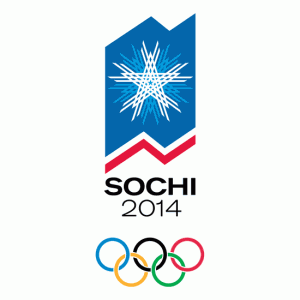 Send NHLers to the 2014 Sochi Olympics
Send NHLers to the 2014 Sochi Olympics
This was, of course, a hot-button debate at the World Hockey Summit this summer, but it’s worth mentioning again.
Bettman and co. must let NHLers play in the Olympics, and they should make that announcement sooner rather than later.
Why? Because although the Stanley Cup and the Winter Classic do a great job of raising hockey’s profile, nothing does a better job of exposing the sport to the masses like the Olympics. Nothing.
This year’s men’s hockey final between the United States and Canada was the most watched hockey game, ever. It drew 44.2 million viewers across North America and was the main event of the two week sporting event.
The NHL would be foolish to give up that kind of mainstream media attention. Bettman should make the announcement soon as well and what better place than this year’s newly reformatted All-Star Game?
What do you think? What ideas do you have for the NHL GMs? Post them in the comment section below.
HPT.com – Northeast Notebook
I'll be talking about this more tomorrow, but I wanted to remind all of you that every Saturday night I write an article on the comings and goings of the National Hockey League's Northeast Division for Hockeyprimetime.com. Follow the block quote to read the piece from two days ago.
The Maple Leafs have been one of the biggest surprises this season. The question is whether or not they can maintain that pace, especially with the Bruins closing in fast. This weekend will go a long way to separating the wheat from the chaff in the Northeast.
- Northeast Notebook: Behind their offense, Bruins beginning to break out
Great Debate: Team Rest-of-Canada v. Équipe Québec
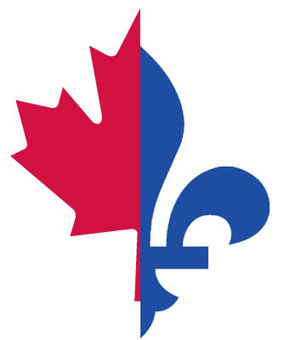 As I’ve alluded to before, I used to work at a Very Large Bookstore in downtown Toronto and my co-workers and I often devised games to entertain ourselves on slow days.
As I’ve alluded to before, I used to work at a Very Large Bookstore in downtown Toronto and my co-workers and I often devised games to entertain ourselves on slow days.
A popular one amongst the hockey fans on staff was: Who would win in a best-of-seven series between an all-time all-star lineup of players from Quebec and the Rest of Canada?
I mean, let’s not kid ourselves. If you pit an all-time Canadian team against an all-time from any other country team it’s a pretty straight forward answer: the guys with the maple leaf on their chest. Seriously, only an all-Soviet/Russian team would avoid the sweep.
But pitting Canadians against Canadiens? That is a tough call. At first glace, you've got to give the advantage to Quebec's goaltenders. Jacques Plante. Patrick Roy. Martin Brodeur. Roberto Luongo. La Belle Provence has a sterling history of producing world-class goalies.
Naturally, defence appears to favour the Rest of Canada. Naming off the National Hockey League's best defencemen of all time reads a lot like the bench of Team ROC.
Up front is where things get tricky. Gretzky against Lemieux. The Rocket versus Stevie Y. It's a dead heat.
The rules are simple:
- Each team gets four lines of forwards, six defencemen and three goaltenders.
- Any player from the National Hockey League’s history is eligible.
- These theoretical rosters are composed of the players in their primes. Bobby Orr's knees are in perfect shape and Michel Goulet hasn't been concussed.
- It’s Rest-of-Canada versus Quebec, not French Canada versus English Canada. For example, Dion Phaneuf, a Francophone, could theoretically play for Rest-of-Canada, as he’s from Edmonton. Similarly, Doug Harvey is from Montreal so he’d play for Quebec, even if he is maudit anglais.Of course, English against French can be a fun exercize as well, but we’re trying to keep things politically sensitive on this blog.
- No, Brett Hull doesn’t count.
I want to know who you think would win, and why. If you’re feeling ambitious, post your rosters as well.
Here are my picks for the rosters, as well as the winner
Team Rest-of-Canada
Forwards:
C - Wayne Gretzky
Steve Yzerman
Gordie Howe
Sidney Crosby
Mark Messier
Bobby Hull
Phil Esposito
Ron Francis
Joe Sakic
Mark Recchi
Doug Gilmour
Adam Oates
Defence:
Bobby Orr
Larry Robinson
Larry Murphy
Paul Coffey
Scott Stevens
Chris Pronger
Goaltenders:
Terry Sawchuck
Ken Dryden
Glenn Hall
Équipe Québec
Forwards:
C-Maurice Richard
Henri Richard
Mario Lemieux
Marcel Dionne
Guy Lafleur
Luc Robitaille
Denis Savard
Pierre Turgeon
Gilbert Perrault
Jean Ratelle
Jean Beliveau
Michel Goulet
Defence:
Ray Bourque
Doug Harvey
Denis Potvin
Serge Savard
Guy Lapointe
Jacques Laperriere
Goaltenders:
Patrick Roy
Martin Brodeur
Jacques Plante
Winner: Team Rest-of-Canada in seven games.
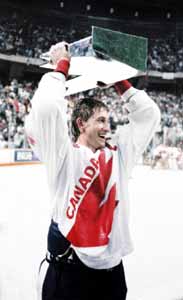 Led by captain Wayne Gretzky, Team Rest-of-Canada would win because they would abuse their biggest advantage: defence.
Led by captain Wayne Gretzky, Team Rest-of-Canada would win because they would abuse their biggest advantage: defence.
With goalies and forward pretty even, the largest disparity is clearly at the blue line. Yes, Bourque and Harvey are two of the best defenders of all time, but they aren’t the best.
Bobby Orr is the best offensive-defenceman of all time and Larry Robinson is the best defensive-defenceman ever. That one-two punch, coupled with the depth of their rearguard corps gives ROC a real advantage.
Rest-of-Canada’s defence is also much bigger than the average forward for Équipe Québec. Although the Richards might be able to slip by the likes of Paul Coffey and Larry Murphy a few times, they’d be exhausted when it comes time to lace ‘em up for Game 7.
Also, ROC's defence would be able to jump up into the attack. Obviously, Orr was capable of scoring just as many points as any forward for Quebec, and Coffey would be able to keep La Belle Provence's defence honest too.
One of the big surprises is that ROC is actually pretty good between the pipes. Yes, the case can be made that one of Roy, Brodeur or Plante are the greatest goaltender of all time - but the same can be said of Sawchuk. Further, Dryden and Hall aren't exactly slouches. Sawchuk, coupled with the reliable defence in front of him, would be more than enough to stop the best that Quebec has to offer.
Up front would still be a dead heat. The Rest-of-Canada couldn't possibly match the flair and play-making ability of Quebec, but with talented and tough forwards like Howe, Gilmour and Recchi bearing down on them on the forecheck, the blue-and-white would feel rushed and pressured on most of their shifts.
For the record: NHL predictions 2010-11
I'm usually not one for predictions since, well, I've got a terrible track record. Just look at my Memorial Cup picks from last season. I went 1-for-4. Yikes. Similarly, I was rocked in this year's March Madness.
But when J.P. Hoornstra, my editor at HockeyPrimeTime.com, asked me to chime in with my picks for the 2010-11 National Hockey League season, well, how could I say no?
You can see all of the picks from the HPT.com staff right here. It's interesting to see that none of us agree on everything, although we come close to a consensus on a few select issues, like Alex Ovechkin winning the Rocket Richard Trophy or the Washington Capitals winning the Eastern Conference championship.
There are also some picks where I stand alone, like tabbing Tuuka Rask to win the Vezina or Jordan Eberle to go home with the Calder. But hey, there's the distinct possibility that we'll all be wrong. That's why you play the games.
But anyway, I figure that I'd share all of my picks right here so that you, the fan, can mock my poor decisions in about nine months time.
Western Conference champion: Vancouver Canucks
Eastern Conference champion: Washington Capitals
Stanley Cup champion: Vancouver Canucks
Hart Trophy: Henrik Sedin, Vancouver Canucks
Calder Trophy: Jordan Eberle, Edmonton Oilers
Norris Trophy: Nicklas Lidstrom, Detroit Red Wings
Selke Trophy: Pavel Datsyuk, Detroit Red Wings
Vezina Trophy: Tuuka Rask, Boston Bruins
Rocket Richard Trophy: Alexander Ovechkin, Washington Capitals
Jack Adams Trophy: Joel Quenneville, Chicago Blackhawks
Executive of the Year: Rick Dudley of the Atlanta Thrashers
Comeback player of the Year: Mike Modano, Detroit Red Wings
Surprise playoff team: Atlanta Thrashers
Surprise non-playoff team: Montreal Canadiens
Agree? Disagree? Want an explanation? Go ahead and ask, I'll be happy to answer.
